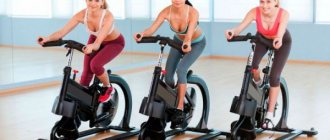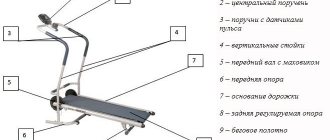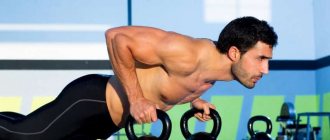The advantage of treadmills
When making a choice, it is necessary to pay attention to the facts, since unsupported arguments can lead to an incorrect interpretation of reality. Therefore, in order for your idea of treadmills to be objective, we suggest considering the main advantages:
- Jogging anytime. You can train regardless of weather conditions and time of day.
- Safety. The paths have a safe surface that is as smooth as in a stadium. Therefore, the chance of injury is extremely low.
- Load variability. By exercising on a treadmill, you can increase your speed using special modes. On the one hand, nothing prevents you from increasing your pace when running outside. The difference lies in the “forced” pace, since the machine will not reduce the speed when the athlete gets tired.
- Changing the angle of inclination. Most treadmills have an incline feature that allows you to simulate running uphill.
- Functional data counting. More advanced tracks are capable of counting heart rate and blood pressure.
- Tempo indicator. Changes in tempo can be observed by looking at the monitor. It will show your speed, pace per kilometer and total running time.
- Functional tests. Functional testing can be performed using a running machine. Typically, such tests are carried out in laboratory conditions with special equipment. The simulator eliminates the need for researchers to run after an athlete around the stadium.
- Gradual transition to walking. It is physiologically correct to complete cardio exercises by gradually reducing the pace. Unfortunately, the recommendation is not always followed. The treadmill will not allow you to break this rule, since the program provides for a slow decrease in pace. The only way to violate this recommendation is to jump off the path (I don’t recommend it).
Nothing is perfect, and a treadmill is no exception. Therefore, the disadvantages include three points:
- Lack of fresh air. If a climate control system is installed in the gym or at home, then the air is cool, but not fresh.
- No natural obstacles. Despite the safety of the track, from the point of view of the chance of injury, such a run can hardly be called interesting. Still, obstacles complement the runs.
- The monotony of the landscape. No matter how much you run along the automatic track, you will remain in one place. The incorrigible disadvantage of the simulator is the change of scenery.
Quantitatively, the pros outweigh the cons. But only one point can be the deciding factor.
Which track to choose for training
Not all treadmills have the function we need, so be sure to check this fact with the seller if you decide to purchase. Well, for those who run in the gym there is no choice. But it is worth remembering that the adjustment of the inclination angle itself may be different for all simulators. This does not affect the functionality, but the convenience does. So, what types of adjustment are there:
- Mechanical. Adjustable using a special footrest holder. Usually it has 2-3 steps. Such tracks, as a rule, cost less and last longer, but they also have their disadvantages. Namely: a slight rise + to change the slope you need to get off the path, and this is not always convenient.
- Electronic. This adjustment is undoubtedly more convenient. It is done by pressing the corresponding buttons with your fingers. It's easy and simple. But, of course, such paths cost more. In addition to simple adjustments, such exercise machines usually have built-in programs that simulate cross-country running or simply automatically change the incline to maintain the required heart rate.
In conclusion, I would like to say that everyone can and even needs to vary the angle of inclination. There are absolutely no contraindications for this. Don't be afraid to use this feature on your treadmill, and you will soon notice that the weight begins to fall off faster, your muscles become toned, and your endurance increases.
Run

The first thing that comes to mind when talking about cardio is running. It would seem that this is the simplest and most natural load for the body, but running is not suitable for everyone. Of course, anyone can start running, but whether they will benefit from it and enjoy it, and whether they will come for a run a second time, depends on many factors.
If you are overweight, have problems with your leg joints or have poor physical fitness, you need to be very careful when choosing a load. If you prefer running, then you should gradually increase the intensity of your training.
What muscles work
Running strengthens more than just your legs and buttocks. The core muscles, including the abs, are also involved in the work. But let's start from the feet.
While running, the quadriceps (front of the thigh), muscles of the back of the thigh, anterior and posterior tibial muscles (shin), and calf muscles work. All gluteal muscles are tensed: large, medium and small, the iliopsoas muscle, responsible for hip flexion, works.
In addition, running strengthens the muscles of the upper and lower abs, as well as the intercostal muscles responsible for a strong core. Working your arms while running provides a slight load on the biceps, triceps and latissimus dorsi muscles.
Of course, running will not help you build up sculpted muscles (arms and legs), but it is quite enough to keep them in good shape.
Running is right for you if:
you want to pump up the cardiovascular and respiratory systems, strengthen (but not pump up) muscles, increase endurance; you want to lose weight and are careful when choosing exercise (a rapid increase in intensity can slow down your metabolism); you are looking for the cheapest type of cardio exercise - without gyms, swimming pools and exercise equipment.
Running is not suitable for you if:
- you have a lot of extra pounds and problems with your leg joints. When running, a lot of stress is placed on the joints of the legs, and in combination with excess weight and unprepared muscles and ligaments, running sessions are fraught with injuries;
- You have hated running since childhood. Many people remember running in physical education class, and these memories are not always pleasant. Perhaps a quiet workout with your favorite music will change your opinion about running, but if everything inside you protests against jogging, you don’t need to force yourself - choose other types of exercise.
How to walk correctly to lose weight?
Before you start training, you need to learn a few important rules, which will be discussed below.
How often should you exercise?
The walking program for burning fat is individual. On average it should be one hour a day. Some trainers advise exercising on this simulator every other day with intense exercise. You can use different types of activities, such as walking uphill and with weights, which involve different durations and different levels of intensity. How often and for how long should you exercise? To begin with, it is enough to exercise twice a week. Gradually, the load and frequency of exercises must be increased.
What heart rate and speed should it be?
Schemes for walking speed from different trainers may differ due to different approaches. One of the most common recommendations is to determine the speed by focusing on the pulse rate, which should be one hundred and thirty beats. Although this indicator is individual for everyone. Depending on the goals pursued during training, in sports circles it is customary to distinguish 5 pulse zones.
- The value of the maximum heart rate depends on age, health status, the presence or absence of physical fitness, as well as the presence of extra pounds.
- A trainer equipped with a cardio sensor will help you monitor your heart rate and adjust the load correctly.
- It is necessary to precede the workout with a warm-up, which is done by walking at a slow pace. The speed of walking must be gradually increased in order to reach the heart rate, which is on average one hundred and thirty beats. The speed should be such as to maintain this indicator for twenty minutes of walking.
- Then, at the final stage of training, the speed is gradually reduced. The recommended time for this stage of training should be ten percent of the time of the entire session.
- An indication that you have chosen too high a speed is that you feel very tired, so you need to adjust your speed downwards.
Attention! It is necessary to change the speed after pressing the “stop” button and stopping the track. To comply with safety regulations, functions must not be changed while the machine is operating.
How to breathe during training?
Correct breathing is, first of all, measured breathing. If you are out of breath and lacking air, then the pace of walking is chosen incorrectly and its intensity must be reduced.
httpv://www.youtube.com/watch?v=embed/nvRmfOfZv6c
Get to know your control panel
Consult your gym instructor or, if you purchased the machine for home use, read the instructions on the panel before turning on the treadmill. Most treadmills have identical buttons:
- start button;
- stop buttons;
- training mode selection buttons;
- Speed and incline adjustment buttons.
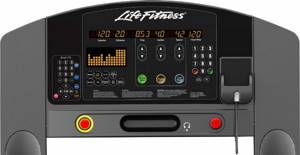
Having mastered one simulator, you will be able to use a treadmill from both Torneo and any other company. Also on some tracks you can set your height and weight - depending on these parameters, the calories burned will be calculated.
How to choose the right path
First, think about your fitness goals. Whether it's improving athletic performance, overall health, weight loss or rehabilitation. Knowing how you will use your treadmill will help you determine the best model to buy.
Next, evaluate your budget. Investing in more expensive equipment will provide you with stronger construction, longer parts warranties, larger work surfaces, higher top speeds and steeper grades. But if your goals don't require the latest technology, you'll likely be better off with a less expensive model.

Try before you buy
It is important to try working out on the machine in person before purchasing. Here's our checklist of questions:
- Do you feel the comfort and cushioning of the running deck?
- Do your feet touch the motor housing when walking or running?
- Is it convenient to set up the machine while standing on the side rails?
- Do you have any questions regarding the display’s information content and convenience?
- Are the controls easy to reach while running?
Four Factors to Consider
- Size. Most treadmills are similar in size, averaging 150 to 200 centimeters in length and 67 to 90 centimeters in width. The folding treadmill will be twice as long when stored. You will need enough space around the treadmill for comfort and safety.
- Ergonomics. If you are a runner, you will need a platform that matches your stride. Consider how comfortable you are on the machine while walking or running. Choose a model that suits you ergonomically and aesthetically.
- High-tech features. iPod docking stations, USB ports, and wireless Internet connections are standard features on many modern tracks.
- Adjustability. Most tracks have a maximum speed of 15 to 20 kilometers per hour; some are faster. They typically have a slope of 10 to 15 percent, but some offer higher slopes.
Once you've narrowed down your choices, here are some other things to consider before making your purchase.
Weight and assembly.
Treadmills are heavy so ask about shipping. Check to see if assembly is included in the price or available at an additional cost.
Guarantees. When it comes to warranties, look at the warranties for the individual components of the machine. Most treadmills have a lifetime warranty on the frame, and there should be a separate warranty for the motor.
Return.
What about returns? Confirm the possibility and conditions of returning goods to the store. If you're purchasing online, find out how return shipping works.
Types of treadmills and their features
There are different types of treadmills and if you are not sure which treadmill to choose for home use, you need to first familiarize yourself with the features of all types of treadmills.
The basic elements of the simulator are a frame and a running surface . The frame serving as a support is made of steel or aluminum. Based on the principle of operation, treadmills are divided into:
Mechanical
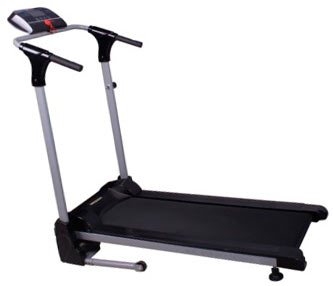
Should you choose a manual treadmill for home use? The track surface rotates due to the action of the trainee’s legs; no power source is required; the design is lightweight.
The main disadvantages of this simulator are the lack of shock absorption, a small set of functions, and the movement of the belt in jerks. Diseases of the veins or joints exclude training on such tracks due to the lack of shock absorption. This type is the most affordable for home use.
Magnetic
When choosing a magnetic treadmill, consider the following points. The running belt is attracted by a system of magnets that control movement and braking, giving a smooth ride; no power source is needed.
Such tracks also have no depreciation; in terms of cost and functions they are practically no different from the first type.
Electrical

Is it better to choose an electric treadmill for home use? The canvas of such simulators is moved by an electric motor controlled by a microcomputer. Through the display, the speed of movement, the inclination of the belt are adjusted, and the training program is set.
Electric treadmills offer good shock absorption, but they are large, heavy, and dependent on a power source. Two groups of electrical tracks are suitable for home use:
- economy, with basic electronics and engine power up to 1.5 hp;
- amateur ones with engine power up to 2 hp. and electronic control.
Folding
If your choice fell on folding treadmills for home use, you need to take into account that there are separate folding (compact) treadmills, which can be electrical or mechanical. The compact exercise machine is easy to store. Folding electric exercise machines retain all functions.
Children's
For the youngest athletes, there are children's treadmills for home use, which are small in size and have a bright appearance. They can be used by children from two years of age and use a simple control system.
To decide which treadmill to choose for home use, evaluate your existing conditions and needs: for some, a compact mechanical exercise machine is suitable, for others, only an electric one with good shock absorption is suitable.
Ways to increase the load
As you become more fit, you can increase the intensity of your workouts. This can be done in different ways, allowing you to use different muscles.
Increasing walking speed
When walking faster, the leg muscles continue to work, but the back and abdominal muscles also become involved because they have to stabilize the body during fast walking. The heart and lungs also work faster.
Increasing the track angle
As the inclination increases, the load on the buttocks and calves increases. Many small muscles in the torso are also trained, the purpose of which is to maintain posture when running on an incline.
Additional weight in hands or weight belt, vest
This is another way to increase the load. The extra weight in your hands will allow you to engage your upper body and arm muscles. The vest will allow you to train your abdominal muscles, and the belt will increase the load on your leg muscles.
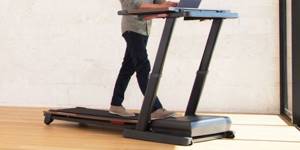
Treadmill for weight loss
Exercises on a treadmill, of course, give their results only with the right approach
. You can often encounter the problem that despite all the exercise on the treadmill, the extra pounds do not disappear. You should not think that the treadmill is ineffective. It’s just that the diet and approach to exercise were initially wrong.
Don’t think that only a treadmill will help you cope with your excess weight problem. To lose weight, you should also take into account various other factors: exercise time and proper diet.
. To begin with, it’s worth focusing on your diet.
To really help you lose weight, you should eat a carbohydrate-rich meal an hour before going to the gym.
. Of course, it is contraindicated to completely overeat, but you can’t do classes on an empty stomach either.
To ensure your workouts are effective, you should eat a small portion of food an hour before class that will give your body 60 grams of carbohydrates. This could be either half a pack of bread or just 4 tablespoons of cooked porridge.
All carbohydrates should go into your strength training, which should last at least 50 minutes. But on the treadmill you will already burn fatty tissue.
For the most effective running on a treadmill, you should exercise on this machine every day.
. The minimum number of classes is 5 times a week. Only in this case will the treadmill bring the desired results. Now it’s worth telling in more detail how to exercise on a treadmill.
Running on a treadmill will give you the best results only in the morning.
. At this time, fats are burned best. But you can always study at any other time of the day.
httpv://www.youtube.com/watch?v=embed/PxLD2dxY1lw
As with running, treadmill time and exercise should always be increased gradually.
. Start small, even if the duration and intensity of the run are not the highest. Gradually you can increase the duration of your run.
The minimum duration of running on a treadmill should be 30 minutes per day.
. The longer you run, the more effective the exercise will be. But even with such a schedule, you should extend your running time to 45-60 minutes a couple of days a week. Only with this approach will your training bring the desired results.
The good thing about a treadmill for weight loss is that it already has numerous modes.
that you can use: resistance, incline, acceleration, etc.
You can use one mode or another, but you can choose it yourself. The regimen you create also allows you to maintain your desired heart rate.
The most important!
Losing weight on the treadmill will only be effective if you run at 50-70% of your maximum heart rate.
To find out your optimal heart rate for training, you can use a simple formula
. From 220 (maximum heart rate), subtract your age and multiply the result, for example, by 0.5. The result obtained will be 50% of your heart rate. You can also multiply your difference by 0.6 to get 60% of your heart rate and 0.7 which is 70% of your heart rate.
You can also find out which workout is more effective for you: running or walking
. To do this, you should use a heart rate monitor to measure your heart rate during a five-minute run at a speed of 7 to 9 km/h. Record your findings.
After five minutes, slow down to allow your breathing to calm down. Then raise the treadmill belt 3-6° and walk along it. Take the readings again, then reduce the intensity of the load and stop.
See when your heart rate was higher: while running or while walking.
If your heart rate was higher while running, this weight loss system is right for you
:
- warm-up: 10 minutes of calm walking at a speed of 4-6 km/h
- 1 segment: 5 minutes of walking uphill at a speed of 4-6 km/h with a slope of 3-6°
- Segment 2: 2 minutes of running at a speed of 7-9 km/h. The slope must be zero
- Stage 3: 1 minute of running at top speed
If your heart rate was higher while walking, this training scheme will suit you
:
- warm-up: 10 minutes of calm walking at a speed of 4-6 km/h
- 1 segment: 7 minutes of running at a speed of 7-6 km/h without incline
- Section 2: Walk for 2 minutes at a 2° incline, then increase the incline another 2° and walk for 2 minutes. Increase the incline in this manner until you reach 10 minutes of walking. Similarly, lower the slope and go down
These segments, both for the first and second training systems, should be repeated 3-4 times
. Properly selected training systems give you a guarantee that you will lose weight.
Using handrails
For a beginner, it is often easier to hold on to the handrails on the front of the treadmill during your first workouts. In addition, the handrails allow you to monitor your heart rate. When you feel comfortable, release the handrails and walk at your own pace.
Once you are fully comfortable with the treadmill, try not to hold onto the handrails. You may be tempted to hold on to them for better balance. However, this will create a number of problems, including:
- reducing exercise intensity (burning fewer calories);
- incorrect posture and body mechanics;
- increased risk of muscle strain;
- decreased coordination and balance;
- decreased proprioception (the ability to naturally determine and correct the position of the body in space).
A couple of useful tips
Some tips will allow you to improve the quality of your cardio training and make your workouts more comfortable and productive:
- increasing the load - allows you to reach new heights, increase the load (for example, running speed) by 10-15% every 1-2 weeks;
- stride length – your running stride has an optimal length if your feet are directly under your body;
- sneakers - wear out quickly, if you run regularly, it is best to change running shoes every six months to a year;
- training period - it is better to choose during the day and after a meal; on an empty stomach in the morning, such training is excessively draining.
We hope that these tips and detailed descriptions of the programs will allow you to get the maximum benefit and pleasure from walking for weight loss.
If you have no contraindications and have not tried interval running before, you should definitely pay attention to such training
Proper clothes and shoes
When running on a machine, as when running regularly, you need to wear high-quality shoes. It provides such a necessary property as depreciation. Shock absorption allows muscles and joints to avoid shock and damage. For this purpose, shoes are needed for both beginners and experts. Remember that running shoes and training shoes are different types of shoes. Training shoes were designed with a completely different purpose.
Training shoes are designed for the sudden lateral movements required in other sports, such as tennis or CrossFit. Such shoes allow the athlete to turn sharply, almost 180 degrees. It supports the heel, which does most of the work during those sharp turns. But when running or walking, this ability is not required.
Running shoes should support forward movement and cushion the forefoot. The properties of running shoes cannot be combined with the properties of training shoes. So, if you want to make your workout more comfortable and enjoyable, invest in quality running shoes. Choose breathable indoor sneakers with mesh uppers. Your feet will sweat and chafe less.
Choose socks made from synthetic materials; cotton absorbs moisture and wrinkles, which can lead to chafing. And synthetic socks with flat seams wick moisture away and fit tightly around the foot.
Running clothes should be functional and comfortable. Wearing the wrong equipment will ruin your entire workout. Give preference to uniforms made of synthetic moisture-wicking materials. Clothes should not rub, so choose your size.
The bra should have wide straps and provide good bust support, so buy a bra made of thick material with strong bust support. You can run in shorts, tights or your favorite training pants. The main thing is that they meet your requirements. If you like to listen to music while running, the small player pocket will come in handy. You can also put the key to the locker there. A little cash and a smartphone can be placed in a special belt bag.
Don't look down
It's hard not to constantly look at the dashboard to see how much time or distance you have left. However, if you look down, your body position will suffer. You are more likely to hunch over, which can lead to back and neck pain. Looking straight ahead is the safest way to run or walk, whether on a treadmill or outdoors. Plus, treadmills are often located in front of windows so you can relax your eyes and watch what's going on outside.
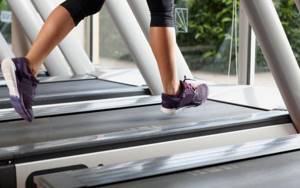
So, in this article, we looked at how to use a treadmill in the gym and at home, some training tips and sample workouts for beginners and intermediates. Now you can carry out effective cardio training to lose weight and improve endurance.
Cardio training for fat burning: how to do it right
1 Start with light loads
As with any type of physical activity, start cardio training with easier options. This will help avoid injuries and premature burnout. Easy 10-minute runs at a moderate pace, or even regular walking if you have injuries or a lot of excess weight. Doctors recommend physical activity for obese people - daily walks. And only after some of the weight is gone, you can start running training. But even if you only have 10-20 kg extra, you still need to increase the intensity of your training gradually.
2 Train within your calculated maximum heart rate
The higher the heart rate at which you exercise (the higher the intensity), the more calories you burn. But if you go beyond the maximum (220 minus age), you risk injury.
3 Maximum duration of cardio training – 45-60 minutes
No matter how much you would like to quickly get rid of excess weight, cardio training lasting more than 60 minutes will lead to the opposite effect. You risk getting injured - which will prevent you from training for some time. You will burn muscles - which are so important for getting a beautiful figure. If you want to maximize fat burning, combine cardio and strength training.
4 Exercise regularly
If you want to get the effect, train 3-4 times a week and with sufficient intensity (according to your level of training) - don’t slack off! The mere fact that you are at the gym is not enough. You need to make an effort to get results. For beginners, 3 cardio workouts per week for 45 minutes may be enough to burn fat (if you do strength training, less). But to increase endurance, you need to train more often/more intensely.
5 Drink enough water
When doing cardio to burn fat and lose weight, you sweat a lot and lose a lot of water - so it needs to be replenished - both before and after, and during the workout itself. Especially in the summer, when you lose additional water due to the heat. During training, drink frequently and in small sips. But you don’t need to “stuff” water into yourself. Focus on your feelings - the body itself will tell you whether it needs water. “2 liters of water a day” is just a myth – each of us has different height/weight/activity throughout the day. And in summer more water is wasted. Therefore, it is logical that different people in different conditions will consume different volumes of water - and not the universal “2 liters”.
Bonus: music for cardio training
How to care for your treadmill
To ensure that the simulator is always in working, good condition, it must be properly cared for. The canvas must be kept clean. Dust and dirt should not accumulate on it. Also, before training, it is recommended to periodically tighten it and lubricate the treadmill mechanism.
During training, the cardio machine must be installed on a level place so that there are no distortions on the surface. To prevent corrosion, after training, you must constantly remove your sweat from the surface of the exercise machine with a dry cloth. At least once a week you need to wipe the surface of the display and handles of the simulator with a damp cloth. When cleaning the machine, do not use cleaning agents or detergents.
The treadmill should not be stored in a cold room or garage. Also, such exercise equipment should not be stored on poorly insulated balconies. This is due to the fact that with sudden changes in air temperature, condensation forms on the surface of electronic equipment, which can damage it. When storing the exercise machine in a cold, unheated or poorly insulated room, it is recommended to pack it securely and tightly.
The best workout for weight loss on the treadmill
The simulator, regardless of model and functionality, supports several types of training. It allows you to exercise both for weight loss and to maintain good physical shape.
It is a mistake to focus on one type. The desired effect is achieved by combining different methods. This is due not only to the correct distribution of workloads, but also to maintaining motivation. A variety of workouts will never get boring.
Training program
Walking should be alternated with jogging. This can be done cyclically, for example, run for 3-4 days, and devote the rest of the time to walking or change modes each time.
The body does not have time to adapt to the loads if the training is varied. When classes start to get boring, two simple tricks can help you maintain motivation:
- Watching TV
The option is present in all modern treadmill models. You can watch your favorite shows and programs not only at home, but also in the gym. In order not to disturb others, connect headphones to the simulator and select the desired channel.
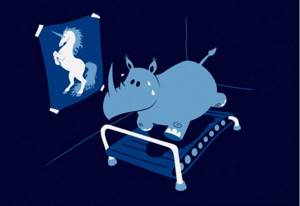
- Listening to music
You can choose your favorite composition or a dynamic melody. An excellent solution would be to create a selection of compositions specifically for performing exercises on the treadmill.
What to consider when choosing a treadmill
When studying the assortment, pay attention to the characteristics of the main parameters:
Engine and its power
The motor provides maximum belt speed. The choice of power should be made depending on the person’s weight: if he is less than 85 kg, and the training is amateur, then a power of 1.5 hp is sufficient. For heavier weights, choose engines from 1.6 hp. To increase the life of the machine, choose a treadmill with the highest constant power.
Running belt size and frame
Optimal parameters of the tape: length 120 cm, width 40 cm. This is enough for comfortable training. It is important to take into account weight, height and expected speed of movement. Pay attention to the shock absorption system and the thickness of the fabric. The joints will be less stressed if the band is elastic. Multilayer fabric will last longer without replacement.
A frame frame is preferable to a steel frame in order to withstand the weight of the trainee and work on the treadmill with a reserve. Inspect the frame design and check for the presence of a folding mechanism, which affects the price of the simulator.
Dimensions and stability
When choosing a treadmill model for home use, decide on the place where it will be located in the house, make sure that the selected dimensions are suitable. Take a closer look at folding treadmills; keep in mind that their unfolded dimensions may vary. Make sure the machine is stable.
Availability of handrails
Handrails are used for safety: to prevent falls and injury. They should not impede movement; the height and width should be comfortable. Children and older people are not recommended to use the machine without them. The overall stability of the simulator depends on the parameters of the handrails.
Display
The display should display important information: heart rate, distance length, speed and number of calories burned.
Comfort of the control panel
A convenient and understandable control system is an important component of a treadmill. First of all, look:
- backlight and monitor settings so that the displayed information is clearly displayed;
- the presence of a pulse meter, its location;
- availability of programs and dynamic measurement functions;
- additional functions (personal trainer, MP3 player, etc.).
Noise level
An important characteristic for close, cohabiting and demanding neighbors. Mechanical treadmills are the noisiest; electric treadmills operate almost unnoticed. The indicator depends on the characteristics of a particular simulator, choose a model that meets your noise requirements, test the simulator when purchasing.
Maximum user weight
Weight affects the frame and motor of the treadmill. Manufacturers of exercise machines indicate this parameter in the characteristics: it varies from 115 to 180 kg. For regular exercise at home, a treadmill designed for a maximum user weight of at least 120 kg is considered reliable. Choose a treadmill that can support 20 kg more than the heaviest user.
Water
Before and after training
To avoid feeling thirsty and at risk of dehydration during exercise, you need to drink water beforehand. It is recommended to drink about 500-600 ml of water 2-3 hours before running. But to avoid the risk completely, you should drink 250 ml of water half an hour before starting your workout. You should also drink 250 ml of water after finishing your workout. To help you see how much water you've drunk, buy a bottle with a measuring scale.
You can also drink water during your workout. Many gyms have drinking water coolers where you can refill your bottle. It is also recommended to drink during training - 200-250 ml of water for every 10-20 minutes of running. Don't be surprised if you have to drink 800ml of water if you've been running for about an hour.
How to properly run to lose weight
Cardio exercise, the flexible schedule of which allows you to perform it at a time when it is convenient and even after strength training, is effective for many athletes and beginners in sports. Running for weight loss helps:
- losing a lot of body weight (if a person wants to lose more than 10 kg);
- improving physical fitness for women and men;
- drying a performing athlete when the initial percentage of subcutaneous fat is small.
How much should you run per day?
The duration of running depends on the person’s fitness level, his state of health, and the goals of the exercise (the type of aerobic physical activity). How much should a beginner run to lose weight? It's better to start at a slow pace for 15 minutes daily (at least 5 times a week). A session for a trained person should last from 40 to 70 minutes with slow running, interval or high-intensity training - 25-35 minutes.

Running intensity
Aerobic activity can vary in speed and exercise. Different jogging paces entail different microprocesses at the cellular level:
- when running slowly, the body uses reserves of fat cells as fuel, but only after 20-30 minutes of training (after glycogen in the muscles is depleted). About 300 calories are burned per hour.
- If the trainee's heart rate goes beyond 60% of the maximum, then the training becomes high-intensity. Under such circumstances, the body breaks down carbohydrates to restore energy reserves, but burns up to 600 calories per hour.
Athletes (not beginners) and people who have no contraindications to such training can choose intense running for weight loss. To find out what your maximum heart rate is, you need to use the formula: 220 subtract your age. That is, if a person is 35 years old, then the maximum heart rate should be 185, and 60% is 185*0.6=111. According to calculations, we have that with a pulse of 111 and above, the body of a 35-year-old person begins to burn carbohydrates, not fats.
When is the best time to run to lose weight?
The time of day for running is not important, it should be comfortable for the runner. The main thing is to monitor your meals before and after
When a person is drying out the body, it is ideal to exercise on an empty stomach (the optimal time for training is the morning before breakfast, or wait 120-180 minutes after lunch). If a person is losing weight (the percentage of subcutaneous fat is more than 15), then you need to run 60-80 minutes after eating. After a run, you should eat a simple protein - egg, or with raw vegetables without additives.
The peculiarity of nutrition is that after cardio the body still burns calories, but recovery has also begun. To prevent cells from using muscle protein as materials, it must be “given” to the body immediately after exercise. You should abstain from carbohydrates - the body uses reserves in the stomach, hips, etc. to replenish energy. Fats inhibit recovery processes, so they should be eaten 120-180 minutes after aerobic training.
Class time is not important, nutrition is important

What pace should you run for cardio?
The running intensity must be calculated using a formula that is tied to the maximum heart rate (HRmax). This frequency is defined as follows:
HRmax = 220 – age.
So, for a 17-year-old person, the maximum heart rate is 220 – 17 = 203. During cardio training, the pulse should be from 65% to 85% of the calculated maximum.
They also often talk about the pulse zone for fat burning (most likely because it is often noted in fitness rooms on cardio equipment). This zone is also determined individually by testing with a gas analyzer. This norm is slightly lower - it is 60-70% of the maximum heart rate. For the average 30-year-old person, the norm is 115-135 beats per minute. However, we must not forget that cardio training is not particularly effective for burning fat.
